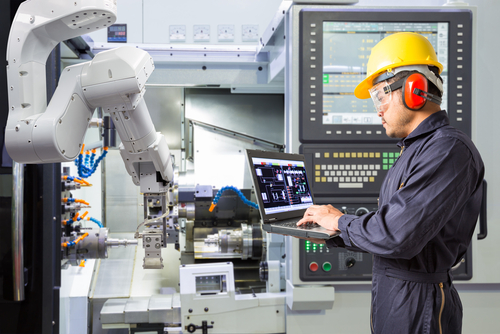
President Trump’s new tax code went into effect on January 1, which means there are a whole new set of rules for businesses. The Trump administration introduced the Tax Cuts and Jobs Act—which included major tax cuts for businesses—back in November, with the goal of bolstering the economy from the top down. The objective is to help spur job growth and reinvigorate the economy, according to the administration. As a result, manufacturers have a new set of codes to follow, with both advantages and disadvantages ahead.
Equipment: The Good News and the Bad News
There’s both an upside and a downside to the new code when it comes to manufacturing equipment. Tax Expert and Sikich CPA Jim Brandenburg told Industry Week that businesses will no longer be able to immediately deduct the full cost of capital equipment after 2022. But there’s some confusion about whether or not equipment will still be depreciable. Brandenburg said that equipment will still be depreciable, but that it will be treated at a slower rate than it is now. However, for the next five years, equipment can still be expensed at 100 percent.
But there’s an upside to this nugget of code as well. Previously, you could take a bonus depreciation—a tax-saving tool where your business could take a first-year deduction on a piece of equipment—only on new business equipment. Now, as part of Section 197 of the new code, you can reap this same benefit when you buy used equipment. Therefore, you might actually save even more when you buy used pallets, warehouse containers, manufacturing equipment or whatever else your business needs to thrive.
This will help encourage a less wasteful society while also saving businesses major long-term funds. It’s true that many manufacturers and other kinds of businesses buy new equipment over used equipment for the greater tax benefit, but now that that’s no longer an issue, we expect to see more and more manufacturing facilities switching to used equipment. To get the highest tax benefits, equipment no longer needs to be brand-new. It just has to be new to your company. Therefore, you might find equipment that was purchased by one company but never used at a much higher rate of savings.
Lower Percentages for Bigger Savings
Of course, we’d be remiss if we didn’t touch on the actual tax rates, which appear to be majorly beneficial to all sorts of businesses. For C corporations, the rate dropped from 35 percent to 21 percent. For pass-through businesses—businesses that don’t pay corporate tax but instead pay individual tax through the owner of the business—the rate dropped from 40 percent to about 30 percent. This should, in theory, allow manufacturers to keep up with the extremely high demand for new technology, equipment and employees.
On top of that, there will be several new fringe benefits to the new tax rates. For example, this year and next year businesses can take advantage of a family leave credit. That means that the businesses could write off any percentage they paid to their employees during a family or sick leave, as long as they pay their employees at least 50 percent of their normal wage. This encourages employers to provide better benefits with some financial relief at the end of the tax year.
The new code also did away with the Alternative Minimum Tax (AMT)—a supplemental income tax required in addition to regular tax—which helps ensure that the new rate of 21 percent is actually realistic for most manufacturers. One thing to note is that the AMT was only repealed for individuals starting this year. Businesses will have to wait until 2019 to reap these new benefits.
How to Take Advantage of the New Code
With all of this taken into account, you should go into the new year understanding exactly how to leverage the new code. For example, if you’ve had your eye on some high-tech new warehouse storage containers, you might want to consider buying used containers instead—this will save you money upfront without lowering your tax credits at the end of the fiscal year.
Of course, you want to be sure that you talk to your company’s accountant for a full interpretation of the new law and to get advice on how to leverage it to grow your business.

